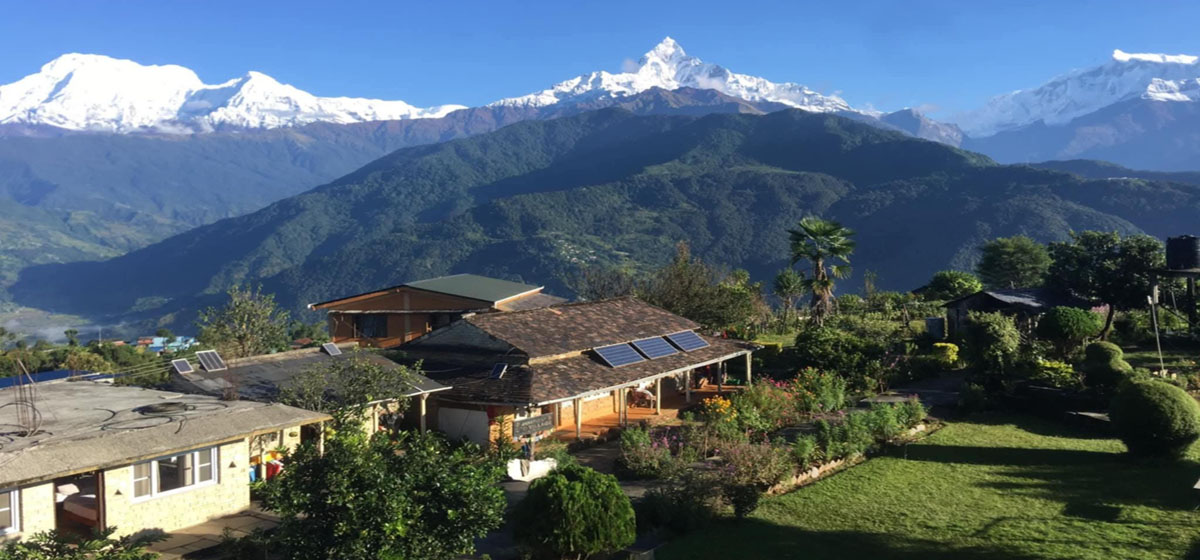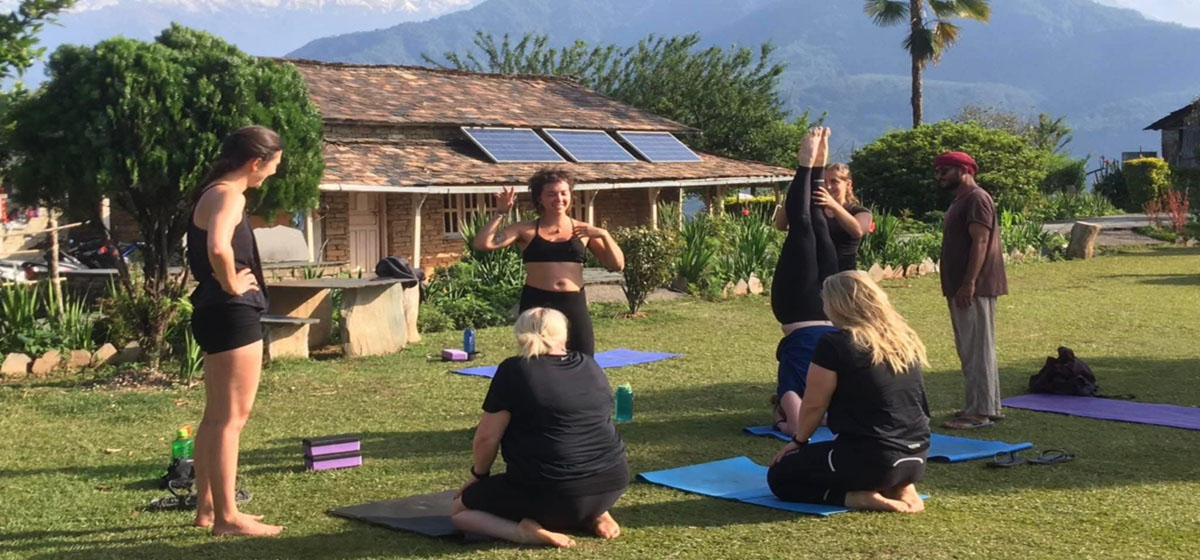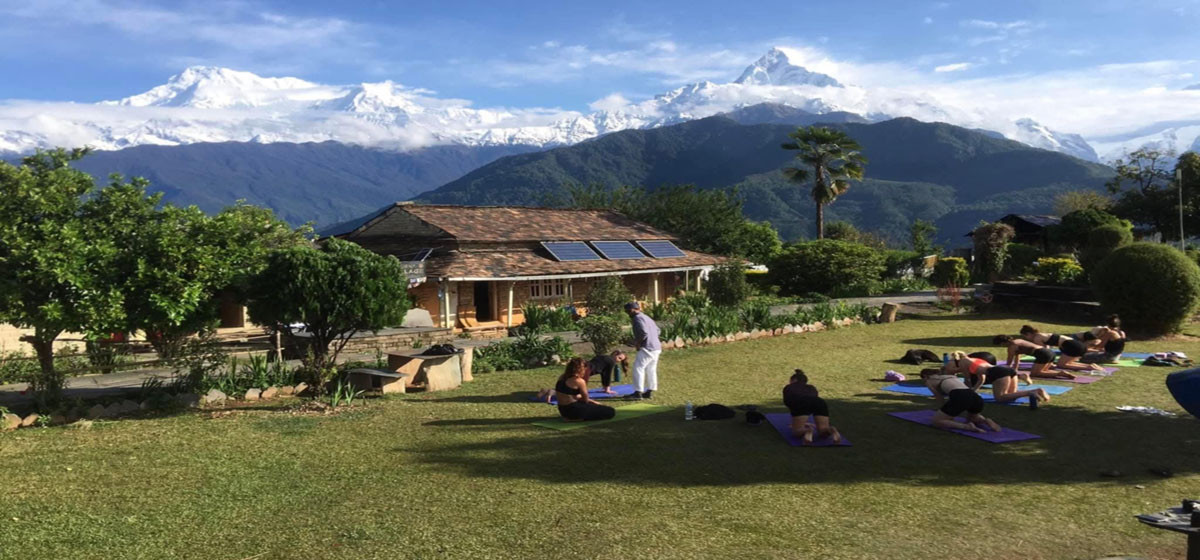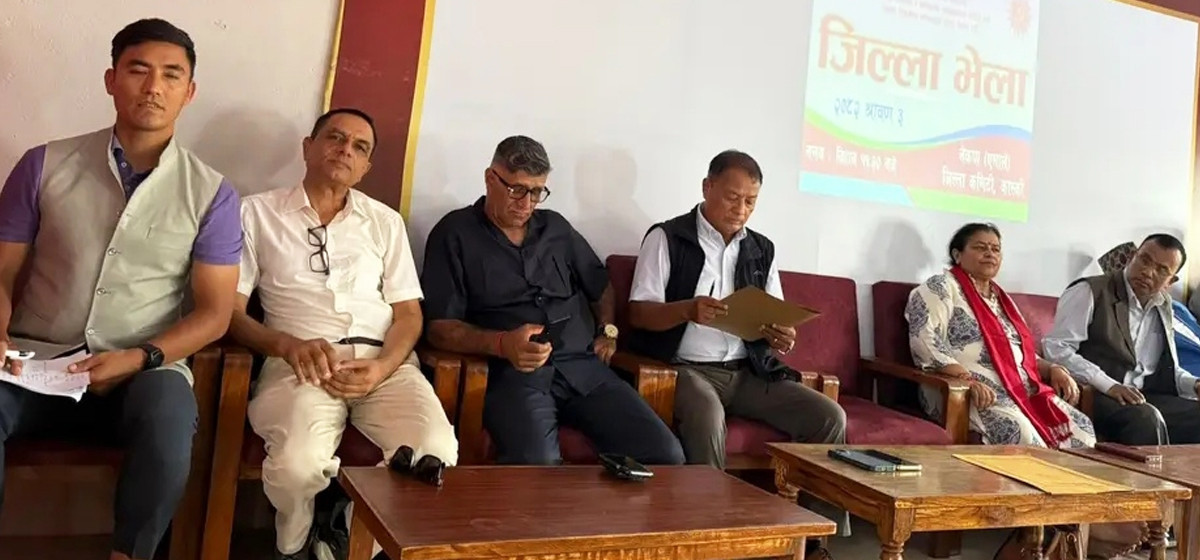POKHARA, July 28: Bishwa Adhikari, from Astam in Machhapuchhre Rural Municipality–6, Kaski, used to be a trekking guide. He tried everything to establish himself in the tourism sector – guiding foreign tourists through the hills, opening a trekking shop and even starting a trekking company. When that wasn’t enough, he rented and operated a hotel.
But none of those efforts took him forward; instead, he faced setbacks. He kept coming up with new ideas to succeed in tourism, but nothing worked. On top of that, the COVID-19 pandemic added further pressure to his business.
While Bishwa was trying to build his career in Pokhara's tourism hub, Lakeside, his father, Shivalal Adhikari, had already started thinking about how to use their ancestral land in Astam. Seeing his sons struggle in Pokhara, Shivalal laid the foundation for a hotel in their village in 2006. He initially built two rooms and tried to bring tourists to the village.
While the father tried to bring the family back to the village and the sons kept struggling in the city, the COVID-19 crisis hit. That’s when Bishwa left everything he was doing in Pokhara and returned to their ancestral home in Astam, about 15 km away. By then, the village had also begun to transform. Their father, a retired teacher, had already started hosting guests at a resort named Annapurna Eco Village. Though the sons supported their father’s efforts, they hadn’t planned to leave the Lakeside business. But the pandemic forced them back.
The resort, slowly growing due to their father’s efforts, gained momentum as tourists started preferring peaceful villages over crowded cities during the pandemic. The three brothers left their businesses in Pokhara and returned to Astam, joining hands to grow the family resort. Meanwhile, they improved the infrastructure and started serving guests. In the early years, they even cooked for the visitors themselves.
“I got into tourism out of hardship and scarcity. I tried everything to succeed in tourism, but in the end, my birthplace believed in me. While I failed elsewhere, I managed to build something in my village,” Bishwa said, “I started trekking after finishing SLC. I made all kinds of efforts. Now, we have created a distinct identity. This success includes everyone in my family.”
Food crisis looms large as drought hits Madhesh districts
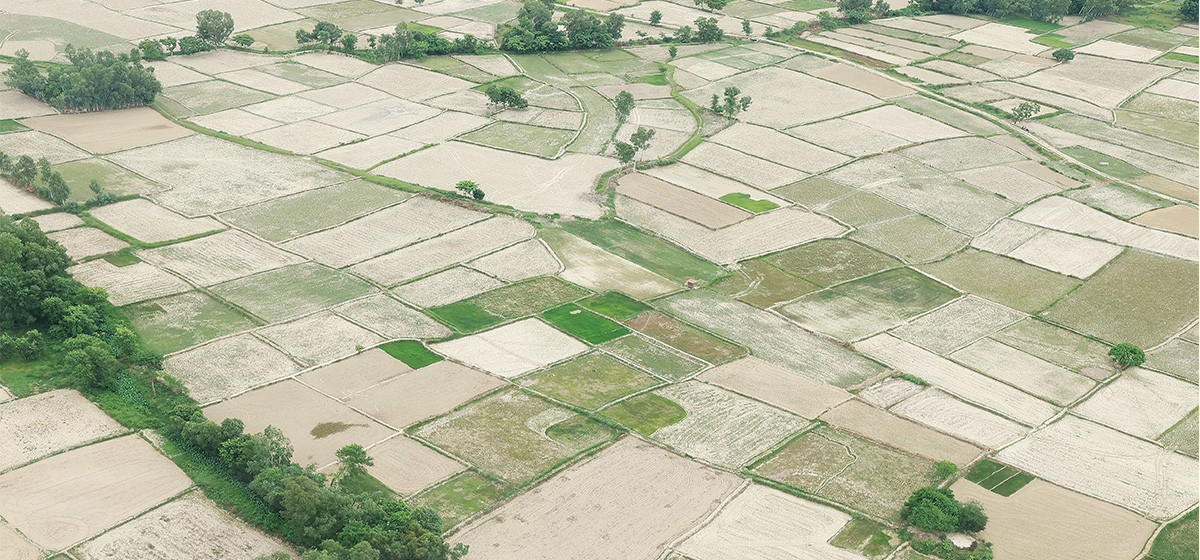
Bishwa entered the tourism field in 1992 as a trekking guide. In 1994, he opened a trekking company. In 1998, he ran a trekking shop. When that didn’t work, in 2000, he started a hotel in Pokhara’s Lakeside by renting a building.
After all his efforts failed, he returned to the village, where he and his family have now established Annapurna Eco Village as a successful tourism venture. The resort now has 23 rooms, a yoga hall, and other infrastructure. Including both ancestral and newly acquired land, it covers about 25 ropanis. Bishwa, his two brothers, and the entire family actively work there.
“Others built their lives in the city, but I returned to the village. We started nurturing the tourism sapling our father planted, and now it's finally bearing fruit. It was a little difficult at first, but now it feels rewarding,” Bishwa said.
“Our food may not have the polish of city dishes, but it’s just as healthy—if not better,” he added. “If we can’t manage with our own farm produce, we buy from the villagers. We try to serve local flavors as much as possible.”
According to Bishwa, the resort is now so well-established that it rarely has a shortage of guests. Sometimes they even have to turn guests away. Some visitors stay for months. His son and brother teach yoga to guests who come specifically for yoga retreats.
“To the north, you can see the Machhapuchhre range. To the east, there’s the winding road, Hemja village, and the cityscape of Pokhara,” Bishwa said, “Guests who want to escape the city’s heat and chaos now consider Annapurna Eco Village a perfect destination. From our resort, you can see different beautiful views from every direction, and those scenes have won many hearts.” He added that even during summer, guests don’t need a fan at the resort on the hill in Astam.
So far, Bishwa has invested about 250 million rupees in the resort. He now plans to add more eco-friendly rooms. He and his two brothers are all engaged in running the resort. One teaches yoga, and another, who returned from Singapore after completing a Master’s in Hospitality Management, also works full-time at the resort.
The Adhikari brothers personally welcome the guests and manage the decor. They also grow vegetables and arrange basic food supplies themselves. They prioritize local products, from welcome tea to meals. They try to avoid serving typical city-style dishes.
Purna Prasad Adhikari, who studied hospitality management in Singapore and returned to the village, is responsible for maintaining food quality. According to him, local produce does not meet all the demand, but most vegetables and grains come from the village. They even grow seasonal vegetables in the fields surrounding the resort.
“Our food may not look polished like in the city, but it’s healthier and even better,” he said, “If needed, we buy from locals to ensure the taste remains traditional and local.”
Their brother Bednidhi Adhikari learned yoga from a visiting guru and now teaches it himself. “Maybe because guests get to practice yoga in nature, many stay for extended courses,” he said, “That’s why we can’t host all interested guests during peak season.”
According to them, the resort has a mix of foreign and domestic guests. Easy transportation, beautiful scenery, snowcapped mountains in winter, and cool air during monsoon all attract visitors to Astam.
“Although foreign visitors are fewer during monsoon, domestic guests are making up for it. We don’t have trouble running the business. It’s just sad we can’t host everyone,” said Bishwa. “Local visitors have been a great support. People looking to escape city life for even a night now choose Astam as a top destination.” He added that sometimes it’s harder to meet demand in the village than in the city.
As Annapurna Eco Village has grown, other villagers have also started resorts and homestays. “Trekkers entering the Annapurna region through Dhampus now prefer this route. The whole village is becoming active in tourism,” said Jhabi Adhikari, another tourism entrepreneur from Astam, “The entire village is turning into a tourism hub.”



